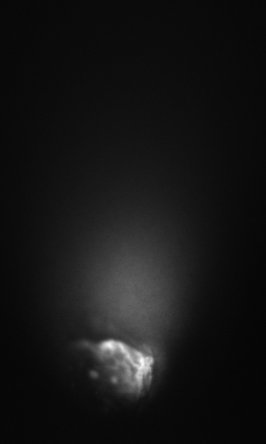AGiR! for genomic integrity/cometassaydev
This is the page for concrete aspects of the cheek cell comet assay protocol...
Experiments
- Cheek Cell comets
Conditions for Comet Cell Assays
- tests of pbs vs saline
- tests for optimal numbers of cells
- tests of filtration vs gravity for eliminating big clumps of cells (1st attempt with lab 40micron filter run 8march2017, with Anna and Bastain)
- tests for staining dyes
- control conditions - negative control with no protease treatment, positive control with H2O2
- tests of non-lab 'kitchen sink' components for reactions (dish soap, contact lens cleaner, etc...)
Current 'best' protocol
1) isolate cells in saline solution (0.9% NaCl in water) after gentle toothbrush collection from inner cheek (rinse mouth with fresh water before 'harvest')
- about 10ml solution
Let biggest clumps settle away, and take remaining solution to pellet most cells
(2ml eppi tube, 2k rpm, 2min), repeating until all solution is pelleted.
Resuspend pellets in about 200 microliters of fresh saline and estimate cell concentration and quality under scope (can use hemocytometer for counting)
3) embed cells in 1% low melting point agarose (made up in standard saline solution)
aiming for about 20,000 cells to be added to 100 microliters agarose (kept at 42oC)
mix and put on clean microscope slide using a clean coverslip to flatten it in place. (can flatten the cell suspension on top of a pre-made agarose base, if desired, see below)
4) treat cell patches with first solutions: saline only, for test cases (3-5 replicates ideally); and H2O2 (0.01%) for positive control case.
5) equilibrate all cell patches with Proteinase K (PK) buffer (for 2ml: 40 microliters 0.5M Tris pH8, 400 microliters 0.5M EDTA, 1ml 5M NaCl, 20 microliters 1% Triton, 0.54ml H2O)
x2 changes (drops of liquid, about 20-50 microliters depending on patch sizes)
6) treat cells with PK+ solution (final PK concentration at 0.5mg/ml: 5 microliters of 20mg/ml PK stock in 200 microliters PK buffer)
keep at least one cell patch without this treatment as your negative control!
RT incubation (watch under scope to see cells 'disappearing' leaving nucleoids - usually only about 20 minutes max)
7) as treatment seems sufficient, apply 1X TBE pH9 (alkaline treatment) to cell patches
2x 5 min
8) equilibrate all patches with normal 1X TBE
3x 2 min
9) run the electrophoresis step: 12V 15 min (only 2 slides will fit easily in the gel box currently used in the lab, but other possibilities exist)
10) staining and imaging (most success with SYBR safe dye, diluted 1/10,000 in TBE for staining, and epifluor imaging
Ideas for protocol improvement
Hoping to assess alternatives that would form a nicely colored DNA 'comet tail' for easier DIY image acquisition/analyses, but neither Hemalum after a MeOH:acetic acid (3:1) fix nor methylene blue aqueous seem very useful at all in this regard... More testing and ideas are very welcome!
If you have trouble removing the coverslip from the patch of embedded cells without messing it up, you can add buffer first, or lose patches during manipulations, you can make an initial patch on the slide before adding the cell suspension in agarose.
Use two slides covered with tape and 2 more slides, as in Monica Driscoll's old WormBook method. (of course, instead of worms in solution, put your embedded cheek cells in molten agarose on top of pre-made patch, then flatten with coverslip as above.
One patch can be cut into sections, for quick tests in different conditions, for example: middle untreated, one side for test, other side for positive control.
Ideas for 'Comet Chip' development as an 'automated' system
an open source microfluidic device is the plan! (with built-in mini-electrodes and microcontroller links)
More to come soon!!
Back to the Genomic integrity project page at the Hackuarium
To the AGiR! site
